Franciacorta is an oasis of peace and tranquility just a stone’s throw from Milan. Franciacorta covers an area of about 200 square kilometers overlooking the shores of Lake Iseo (here is our 10-stop itinerary on Lake Iseo) and includes as many as 19 municipalities in the Province of Brescia. Its rolling hills covered with vineyards are the symbol of this lush land known worldwide for the great quality of its wines. Therefore, a trip to Franciacorta cannot be separated from the discovery of its many wineries and wineries where one can touch, and taste, the most celebrated products of this land. However, Franciacorta has much more than excellent wine to offer its visitors.It is in fact an area rich in history that over the years has seen the passage of Gauls, Romans, Lombards, hosted great monasteries, was the subject of disputes between Guelphs and Ghibellines, has known French and Austrians and was the scene of the Risorgimento struggles, and all these changes have left as dowries churches, palaces and many monuments that still embellish these wonderful hills. Here are 10 places you absolutely must see on your trip to Franciacorta.
In Provaglio d’Iseo, above a rocky rise is the Monastery of San Pietro in Lamosa, a very ancient building overlooking the peat bogs. The monastery is believed to have been built where ancient pagan and early Christian temples stood in antiquity; instead, traces of the construction of an early church date back to the 11th century, which was later donated to the monks of the Abbey of Cluny and then became the center of economic and religious life in the area. The Cluniac monks remained there until the 15th century, and traces of their passage are still clearly visible even though today the church has distinctly 15th- and 16th-century features. Numerous works of fine workmanship are preserved inside, including a fine cycle of frescoes of theHistoria salutis dating from the 15th-16th centuries, which is located in the adjoining oratory of Santa Maria Maddalena.
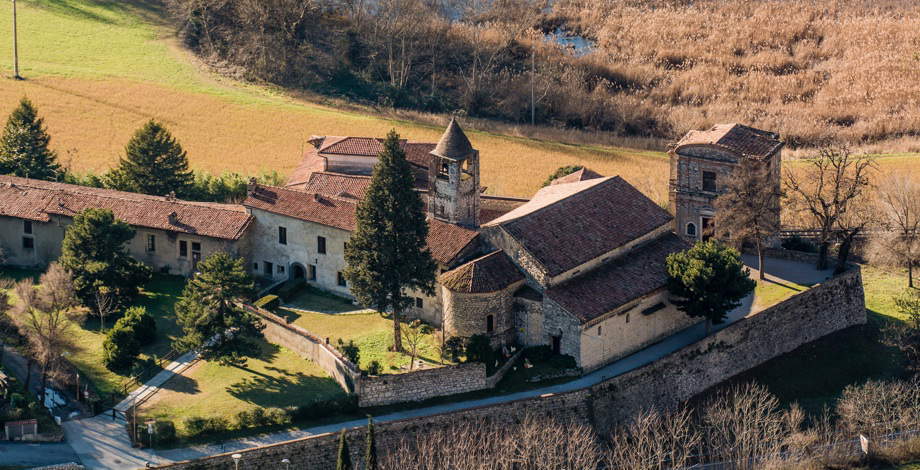
The entire history of Franciacorta has been strongly characterized by the presence of large monastic entities, which since before the year 1000 have contributed decisively to the reclamation, clearing and cultivation of the territory. One of the most important examples of the monastic presence in Franciacorta is theOlivetan Benedictine Abbey of San Nicola in Rodengo Saiano. The origins of this religious complex are documented from the 11th century, and it was precisely the presence of Benedictine monks, faithful to their motto “ora et labora,” that helped transform this territory. The present abbey building dates back to the 15th century and was erected by the Olivetan congregation before becoming an abbey in the following century and being embellished according to a distinctly Renaissance taste with various works of art.

A medieval castle with a precious Renaissance villa inside. All this can be found in the heart of Franciacorta where the massive castle of Bornato and the beautiful Villa Orlando meet, from which the eye can sweep over the entire Po Valley. The original core of the castle consists of a mighty stronghold that guarded the ancient consular road that joined Bergamo and Brescia. This was later expanded by the Bornati family with the construction of walls, towers and buttresses becoming increasingly central to the life of these lands so much so that it often hosted artists and men of letters including even Dante Alighieri. In 1564 inside the castle the Gandini family built Villa Orlando. These admirable examples of architecture are surrounded by a wonderful park, while the main tower of the castle houses the ancient cellars.
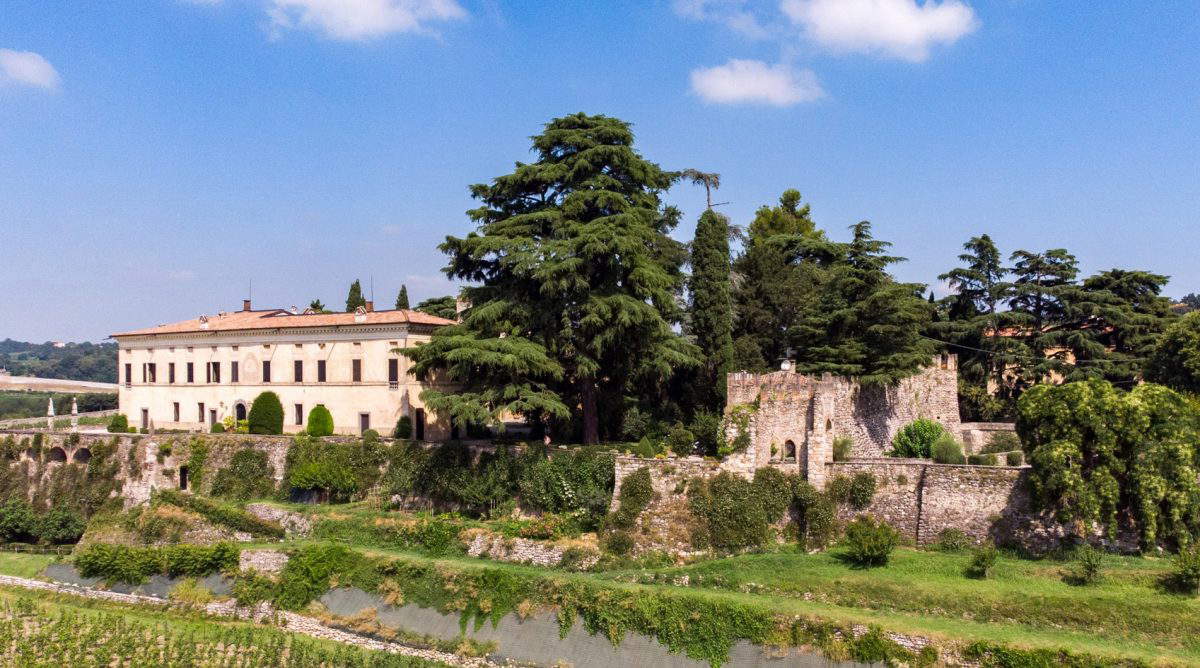
The massive walls, the large moat, the tall towers and still the unmistakable Ghibelline battlements: the castle of Passirano is a perfectly preserved piece of the Middle Ages in the heart of Franciacorta. Erected for purely defensive purposes starting in 1100, for centuries it protected the locals from attacks by nomads and brigands. Very beautiful are the large 18th-century entrance portal and the Specola tower, which in the past was used as an astronomical observatory. Today the castle of Passirano houses a winery, but it can be admired in all its beauty by walking around the walls.
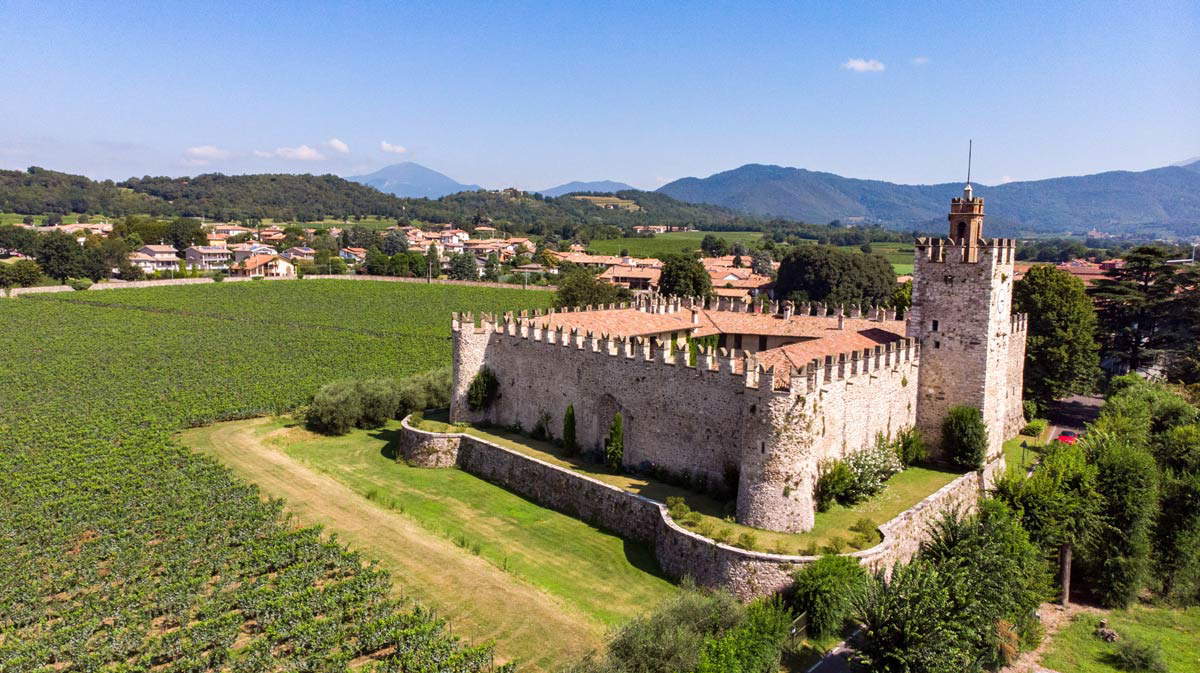
Also known as Palazzo Porcellaga, from the surname of the nobleman Ottaviano who had it built in 1560, Quistini Castle has pentagon-shaped walls, five towers at the corners and a four-story tower set inside. Although part of the castle is private, it is possible today to visit some of its rooms, including the Grotesque Room, which owes its name to the 19th-century decorations adorning its walls. Absolutely unmissable, then, is a visit to the wonderful garden that embraces the entire castle. Here there is a striking labyrinth of roses formed by three large concentric circles and then again the enchanting secret garden with its multicolored hydrangeas and finally also a bioenergetic garden with therapeutic properties.

The foundation named after the Brescian entrepreneur Paolo Zani and his daughter Carolina aims to preserve and enhance the art collection of the House-Museum of Cellatica and its wonderful garden. The House-Museum is much more than a treasure chest that holds important works of art; it is a meeting and discussion place where seminars, concerts and awards designed to encourage the education of younger people are held. In contrast, the House Museum’s collection consists of more than 1,200 works including paintings, sculptures, applied arts and furniture. These include authentic masterpieces by absolute masters such as Canaletto, Tiepolo, Guardi, Longhi, and Boucher, alongside precious Baroque and Rococo furniture mainly from France and Venice and extraordinary objects of applied art from the 17th and 18th centuries.
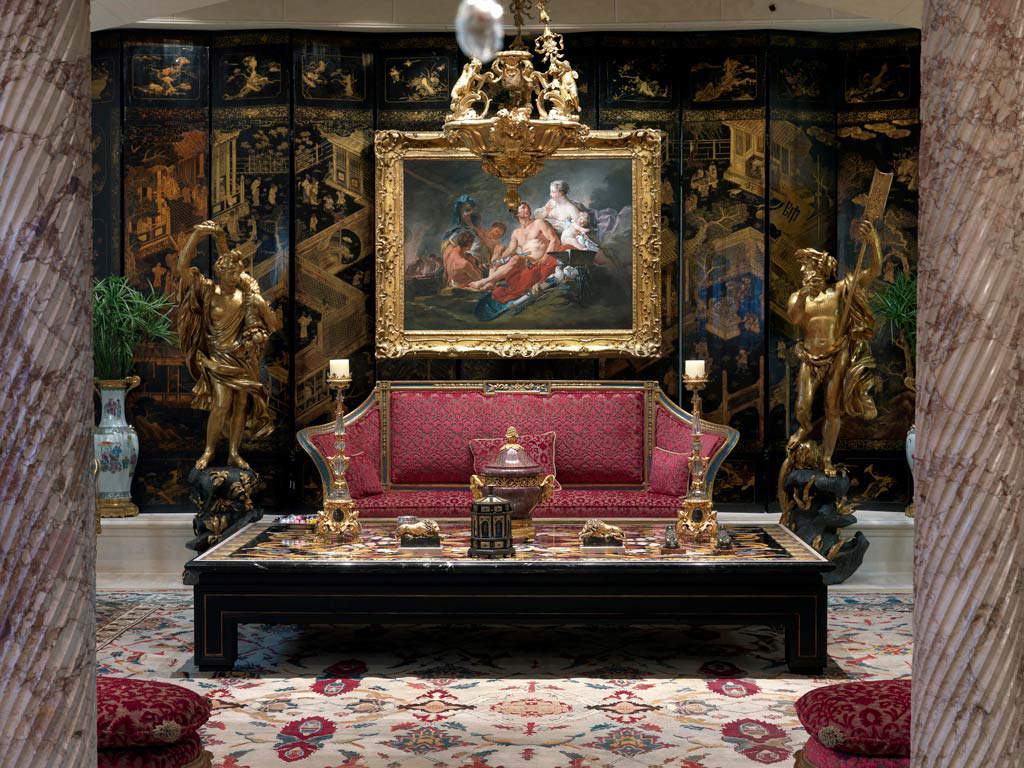
It is impossible to fully understand Franciacorta without immersing oneself in the centuries-old traditions of the people of these lands and their indissoluble bond with the agricultural world that, in these parts, means vines and wine first and foremost. Precisely in order to delve into how over the centuries this relationship between Franciacorta and its people has become so close, in the mid-1980s Gualberto Ricci Cubastro decided to inaugurate a museum dedicated to the world of agriculture and wine at the farm of the same name in Capriolo. This now occupies four halls open year-round divided that preserve thousands of objects that bear witness to the work in the fields and the farming civilization of yesterday and today.
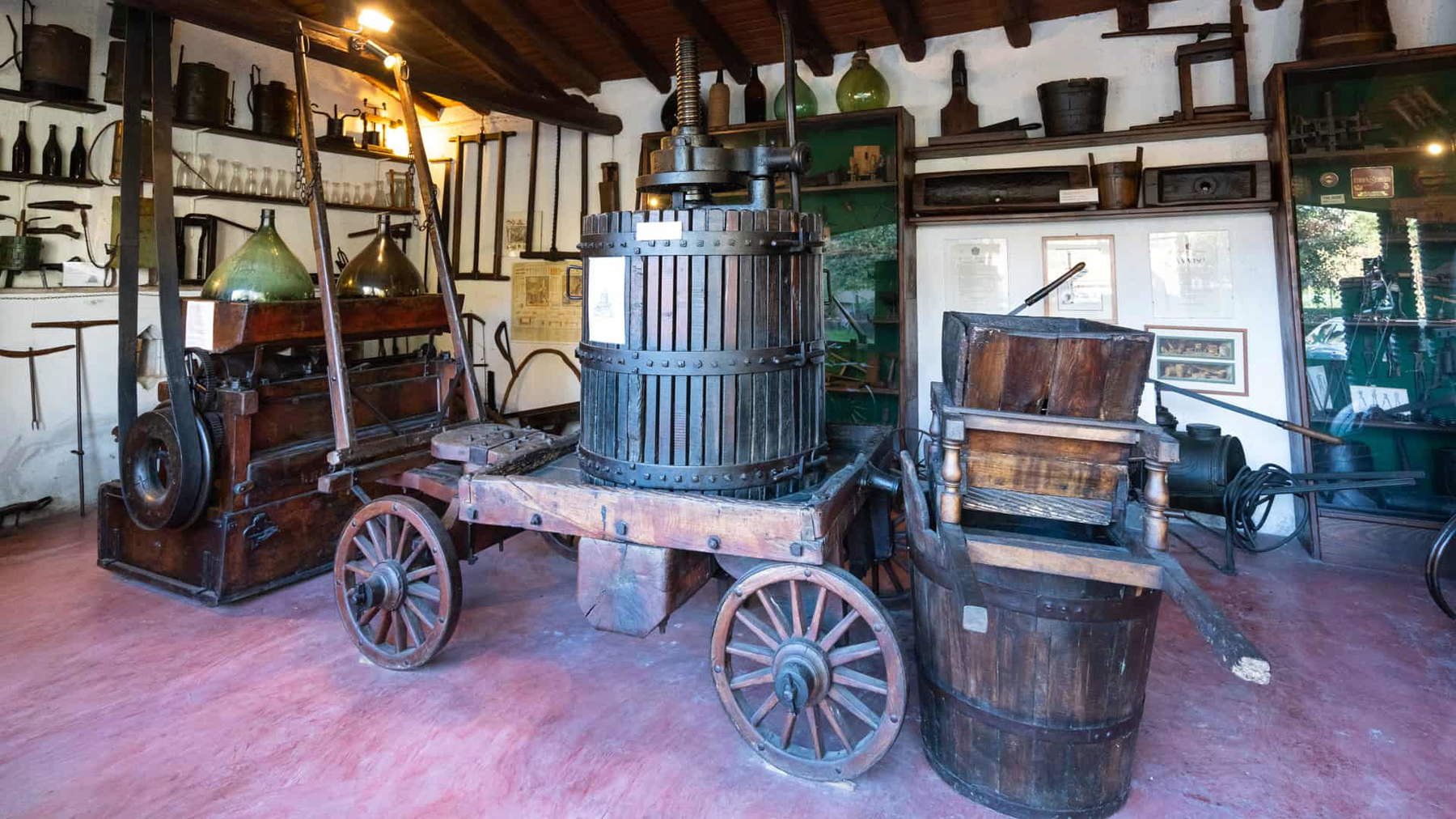
Nestled in an enchanted landscape, surrounded by leafy forest at the foot of Mount Dalma, in the locality of la Grotta lies the charming hamlet of Maglio. The small hamlet is traversed by the Molinara irrigation ditch, which formerly moved the wheels of a grain mill and an iron mallet both dating back to the 1400s. While today the old mill has been converted into a private home it is still possible to visit the imposing Averoldi mallet, a museum forge where demonstrations of ironworking using ancient techniques can be seen. Borgo del Maglio is also home to the Pietro Malossi museum house inside which a private collection of period weapons, furniture, prints and paintings can be admired.

The La Montina estates are located in Monticelli Brusati in the far northeastern corner of Franciacorta and house, along with the winery and its wine shop, the 17th-century Villa Baiana and the first contemporary art museum in these lands. Here there is a permanent exhibition by Milanese artist Remo Bianco whose paintings and sculptures are arranged in the various rooms of the estate, from the winery to the villa. The museum also often hosts solo exhibitions of important contemporary artists, both Italian and foreign, whose works are displayed in an evocative itinerary that winds its way through richly decorated rooms, barrels and wine bottles.

Art and nature, these are the ingredients that make the Franciacorta Sculpture Park unique. Among the vineyard-grown hillsides that wind between Adro and Erbusco lies this incredible cultural trail created at the behest of Vittorio Moretti who, at the beginning of the 21st century, announced the Third Millennium sculpture prize aimed at artists under 30. Of the nearly 800 young sculptors who came forward, 13 were selected that today go to make up this evocative park. These include Fiori di pietra by Salvatore Sava from Lecce, My Inside by the Japanese artist Maki Nakamura, and La casa orizzontale by Giorgio Spiller from Veneto, which won the first three places in the competition and which, like the other works in the park today, blend harmoniously with the greenery of Franciacorta, making breathtaking landscapes even more precious.
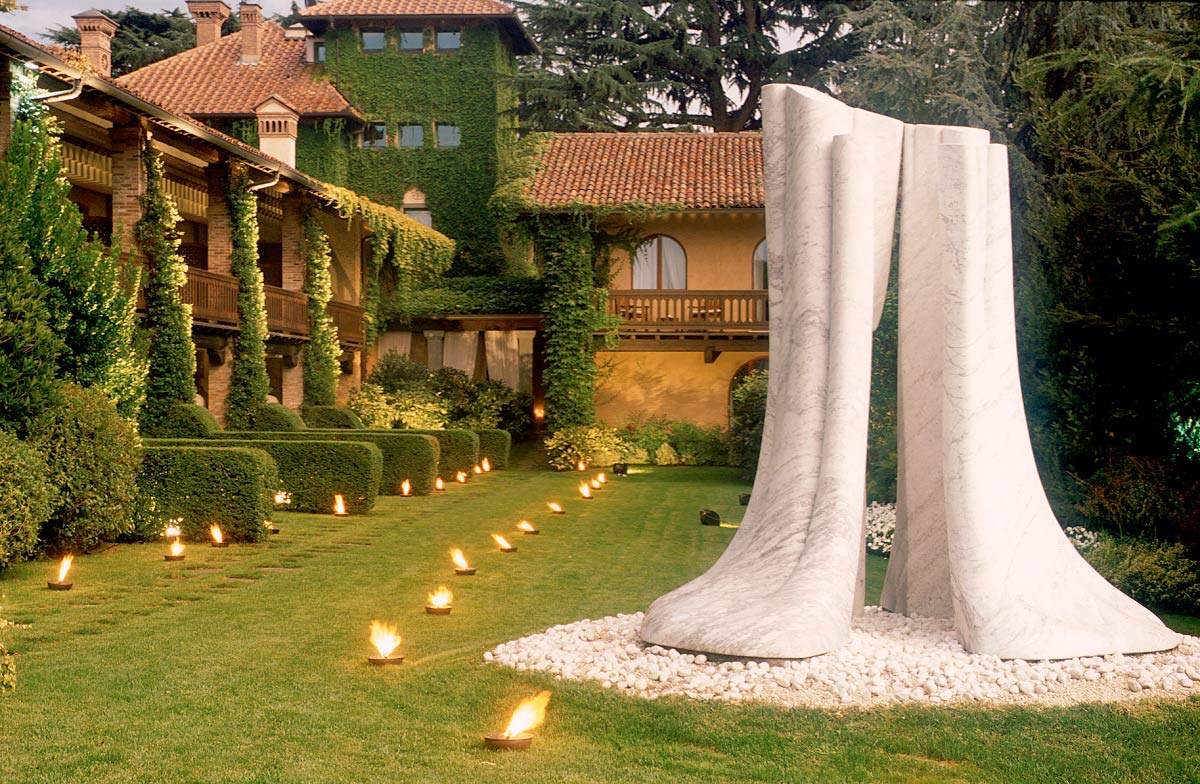
 |
| Franciacorta, what to see: itinerary in 10 steps |
Warning: the translation into English of the original Italian article was created using automatic tools. We undertake to review all articles, but we do not guarantee the total absence of inaccuracies in the translation due to the program. You can find the original by clicking on the ITA button. If you find any mistake,please contact us.